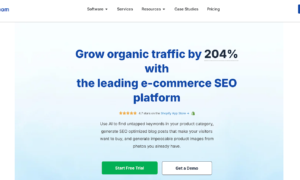Introduction:
In the dynamic world of e-commerce, the use of shopping carts has become indispensable for online retailers. These virtual carts serve as the backbone of an online store, streamlining the purchasing process for customers and providing a convenient platform for businesses to manage transactions. In this article, we will delve into the advantages and disadvantages of shopping carts, shedding light on their impact on the overall e-commerce experience.
Advantages of Shopping Carts:
1. Enhanced User Experience:
a. Shopping carts provide users with a seamless and organized way to browse and select products. They can easily add or remove items, review their selections, and proceed to checkout effortlessly.
b. The intuitive design of modern shopping carts contributes to a positive user experience, fostering customer satisfaction and loyalty.
2. Efficient Order Management:
a. E-commerce platforms equipped with shopping carts offer efficient order management systems. Retailers can easily track customer orders, manage inventory, and process transactions in real time.
b. Automation features within shopping carts reduce the likelihood of errors and enhance the overall efficiency of order processing.
3. Increased Sales and Conversions:
a. Shopping carts facilitate the upselling and cross-selling of products by suggesting complementary items during the checkout process.
b. Features like abandoned cart recovery emails help re-engage potential customers who may have left the site without completing their purchase, ultimately boosting sales and conversion rates.
4. Secure Payment Processing:
One of the paramount advantages of shopping carts lies in their ability to ensure secure payment processing, a crucial aspect of any online transaction. The secure payment processing feature within shopping carts is designed to safeguard sensitive financial information and protect both the customer and the retailer from potential cyber threats. Here’s an in-depth exploration of the elements that contribute to secure payment processing:
I. Encryption Technology:
a. Shopping carts leverage advanced encryption technologies to encrypt sensitive data such as credit card details, personal information, and transaction data. This ensures that even if intercepted, the data remains unreadable and secure.
b. Secure Sockets Layer (SSL) and Transport Layer Security (TLS) are common encryption protocols used by shopping carts to establish a secure connection between the customer’s browser and the e-commerce website’s server.
II. Payment Gateway Integration:
a. Secure payment processing relies on the integration of trusted and reliable payment gateways. Payment gateways act as intermediaries between the e-commerce website and the financial institutions, facilitating the authorization and processing of transactions.
b. Reputable payment gateways adhere to stringent security standards and compliance regulations, providing an additional layer of protection for online transactions.
5. Scalability and Customization:
a. Many shopping cart solutions are scalable, allowing businesses to grow and expand their online operations seamlessly.
b. Customization options enable retailers to tailor the shopping cart to their specific branding and functional requirements, creating a unique and memorable online storefront.
Disadvantages of Shopping Carts:
1. Technical Challenges:
a. Implementation and maintenance of a shopping cart system can pose technical challenges, especially for small businesses with limited resources.
b. Issues such as software updates, compatibility with other platforms, and technical support can become hurdles that require expertise to overcome.
2. Cart Abandonment:
a. Despite efforts to streamline the checkout process, cart abandonment remains a common issue in e-commerce. b. Customers may abandon their carts due to unexpected costs, complex checkout procedures, or a lack of trust in the website.
c. Strategies to minimize cart abandonment, such as transparent pricing and a user-friendly interface, need to be implemented to mitigate this challenge.
3. Dependency on Internet Connectivity:
a. Online shopping carts rely heavily on a stable internet connection. Poor connectivity can lead to frustration for both customers and retailers.
b. To counter this disadvantage, some shopping cart systems now offer offline functionalities, allowing users to continue browsing and shopping even in the absence of a reliable internet connection.
4. Security Concerns:
a. While shopping carts prioritize secure payment processing, they remain potential targets for cyberattacks and data breaches.
b. Regular security audits, compliance with industry standards, and the use of advanced encryption technologies are essential to mitigating the security risks associated with shopping carts.
5. Costs and resource allocation:
Implementing a robust shopping cart system may involve upfront costs for software, customization, and ongoing maintenance.
Small businesses with limited budgets may find it challenging to allocate resources to develop and maintain a feature-rich shopping cart, potentially limiting their online capabilities.
I. Upfront Costs:
a. Implementing a robust shopping cart system often incurs upfront costs. These costs may include the purchase or licensing fees for the shopping cart software itself, as well as any necessary customization to align the system with the specific needs and branding of the business.
b. Additionally, businesses may need to invest in hardware infrastructure, such as servers, to support the shopping cart’s functionality. The magnitude of upfront costs can vary based on the complexity of the chosen shopping cart solution.
II. Customization Expenses:
a. Customization is often required to tailor the shopping cart to the unique requirements of a business. This may involve the integration of specific features, branding elements, and design modifications to create a seamless and cohesive online shopping experience.
b. Customization expenses can escalate based on the complexity of the required modifications and the level of expertise needed to implement them. Businesses should carefully assess their customization needs and budget accordingly.
3. Maintenance and Updates:
a. Ongoing maintenance and updates are critical for the smooth operation of a shopping cart system. This includes keeping the software up-to-date with the latest security patches, bug fixes, and feature enhancements.
b. Maintenance costs can encompass fees for software updates as well as expenses related to the monitoring and optimization of the shopping cart’s performance. Regular maintenance is essential to address any emerging issues promptly and to ensure the longevity of the system.
4. Integration with Other Systems:
a. Businesses often require their shopping cart systems to integrate seamlessly with other business applications, such as inventory management, customer relationship management (CRM), and accounting software.
b. Integration costs may arise from the need for specialized development or third-party tools to establish and maintain these connections. The efficiency of these integrations is crucial for optimizing overall business processes.
Conclusion:
Shopping carts play a pivotal role in the success of an e-commerce venture, offering a plethora of advantages that contribute to a seamless online shopping experience. However, it is essential for businesses to navigate the potential disadvantages and challenges associated with shopping carts to ensure their effective implementation and long-term success.
As the e-commerce landscape continues to evolve, staying informed about the latest advancements in shopping cart technology and best practices is crucial for online retailers aiming to provide an optimal shopping experience for their customers. By carefully weighing the pros and cons, businesses can make informed decisions about the shopping cart solution that aligns with their specific needs and goals, ultimately driving success in the competitive world of online commerce.



































